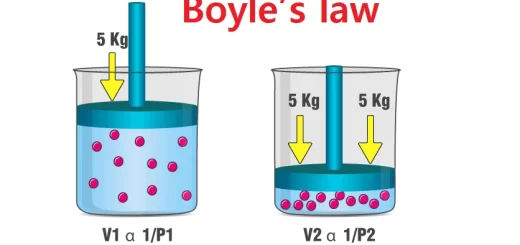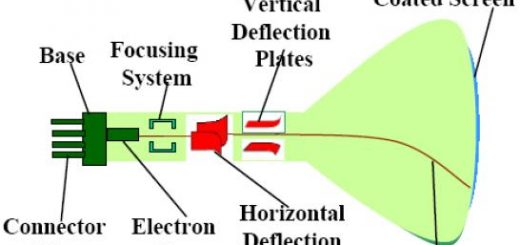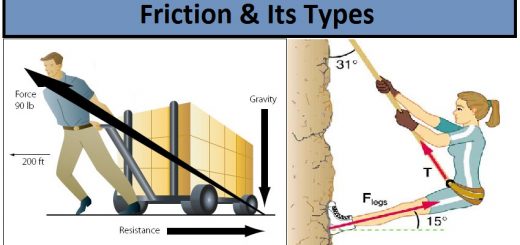Ohm’s Law for the closed circuit, Relation between emf (VB) of an electric cell & voltage across its poles
The emf of an electric cell (battery – source) is the total work done inside and outside the cell to transfer electric charges in the electric circuit, If we denote the emf of the battery by (VB), the total current intensity in the circuit by (I), the external resistance by (R) and the internal resistance of the cell by (r).
Ohm’s Law
Then: VB = I R + I r
VB = I (R + r)
I = VB / (R + r)
This is known as Ohm’s law for a closed circuit where:
Electric current intensity = Total electromotive force / Total resistance of the circuit
The relation between emf (VB) of an electric cell and voltage across its poles (V)
Based on Ohm’s law for a closed circuit:
VB = I R + I r , V = I R
∴ VB = V + I r , ∴ V = VB − I r
From the previous relation, we see that as the external resistance (R) increases, The electric current (I) passing in the circuit gradually decreases and the potential difference (V) between the poles of the cell increases.
The potential difference (V) between the poles of the cell becomes equal to the emf of the source (VB), When the value of the current becomes very small, (I r) can be ignored.
The emf of an electric cell is greater than the potential difference between the terminal of its external circuit when the circuit is switched on, Because the internal resistance of the electric cell consumes work to pass the current inside the electric cell based on the relation (VB = V + I r) and thus (V < VB).
Hence we may define the emf of the cell as:
The emf of the cell (VB) is the potential difference across poles of the cell in case of no current in the circuit (switch is opened), or it is the total work done inside and outside the cell to transfer an electric charge of 1 C (electric charges unit) in the electric circuit, The emf of the source is measured in Volt.
When the emf of an electric cell = 3 V, The total work done inside and outside the cell to transfer an electric charge of 1 C in the electric circuit = 3 J.
In case of one electric cell connected in the circuit:
Where VB is the reading of the voltmeter on the battery that has an internal resistance of r, the battery is connected on series with a resistance that has a potential difference of V2 and it is connected in series with an ammeter.
If the switch K is closed:
I = VB / (R + r)
I = VB − V1 / r
I = V2 / R
V2 = I R , V1 = VB − I r
If the switch K is opened:
I = 0
V2 = 0 , V1 = VB
In case of two electric cells connected in series in the circuit
Where, V1 is the reading of the voltmeter on the first battery that has an internal resistance of r1, V2 is the reading of the voltmeter on the second battery that has an internal resistance of r2, the potential difference on the two batteries is V3.
When the two batteries are connected in the same direction:
I = [ ( VB )1 + ( VB )2 ] / ( R + r1 + r2 )
V1 = ( VB )1 − I r1
V2 = ( VB )2 − I r2
V3 = V1 + V2
When the two batteries are connected in the opposite directions, Where (VB)2 < (VB)1:
I = [ ( VB )1 − ( VB )2 ] / (R + r1 + r2)
V1 = ( VB )1 − I r1 (discharging case)
V2 = ( VB )2 + I r2 (charging case)
V3 = V1 − V2
Properties of Electric current, Simple electric circuit, Current intensity & Potential difference
Electrical current, Potential difference, Electric resistance and Ohm’s law
Resistances connection (series & parallel), Electric energy and Electric power
Kirchhoff’s first law, Kirchhoff’s second law & how to solve problems of Kirchhoff’s laws



